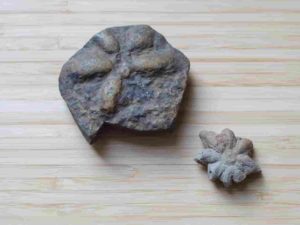
A new study from CU Boulder finds that hundreds of millions of years ago, small single-celled organisms may have evolved into larger multicellular life forms to better propel themselves through icy waters.
The research was led by paleobiologist Carl Simpson and appears today in the journal The American Naturalist. It hones in on a question that’s central to the history of the planet: How did life on Earth, which started off teeny-tiny, get so big?
“Once organisms get big, they have a clear ecological advantage because the physics around how they capture food become totally different,” said Simpson, assistant professor in the Department of Geological Sciences at CU Boulder and the CU Museum of Natural History. “But the hard part for researchers has been explaining how they got big in the first place.”
In his latest study, Simpson draws on a series of mathematical equations to argue that this all-important shift may have come down to hydrodynamics — or the pursuit of a more efficient backstroke.
Roughly 750 million years ago, and for reasons that scientists are still debating, the planet became suddenly and dramatically colder — a period of time called “Snowball Earth.” To adapt to these frigid conditions, which can make swimming more difficult, small organisms like bacteria may have begun to glom together to form larger and more complex life.
Simpson still has a lot of work to do before he can prove his theory. But, the geologist said, the results could help to reveal how the ancestors of all modern multicellular life, from flowers to elephants and even people, first arose on Earth.
“By swimming together, these cells could remain small on an individual level but still produce more power,” Simpson said. “They become both bigger and faster as a group.”
Snowball Earth
Those successes took place at a seemingly inhospitable time in the planet’s past.
During “Snowball Earth,” the globe may have been all but recognizable. Ice sheets a half-mile thick or more may have blanketed the planet for as much as 70 million years, while temperatures in the oceans plummeted to less than 32 degrees Fahrenheit.
But even amid those frigid conditions, something spectacular happened: The first organisms made up of many different cells, not just one, began to emerge around the planet. Scientists still aren’t sure what those ancient multicellular organisms might have looked like. One theory suggests that they resembled Volvox, a type of algae that are common in oceans today and are shaped like a hollow sphere or snow globe.
“That’s something that has lodged in my mind for years,” Simpson said. “How do Snowball Earth and the rise of multicellular organisms go together?”
The answer to that counterintuitive problem may hinge on a little-known property of water.
Simpson explained that when saltwater gets colder, it also becomes several times thicker, or more viscous. Humans are too big to notice the change. But for organisms the size of modern-day bacteria, the difference can be huge.
“When you’re small, you’re stuck,” he said. “The water moves you.”
Taking a swim
The geologist ran a series of calculations to gauge how organisms of various shapes and sizes might fare in the oceans of Snowball Earth. And, in this case, bigger might be better.
Simpson said that modern-day bacteria and other single-celled organisms move around in aquatic environments using two different sets of tools: There are cilia — which are wavy, hair-like projections — and flagella — think the “tails” on sperm cells. Both of these tools would have been painfully slow in frigid ocean conditions, his results show.
If individual cells joined forces to make a bigger organism, in contrast, they could produce a lot more swimming power while keeping the energy needs of each cell low.
“The advantage of the multicellular strategy is that each cell stays small and has low metabolic requirements, but these cells can swim together,” Simpson said.
He’s currently testing the theory using experiments with modern algae in a lab and by digging deeper into Earth’s fossil record. One thing is clear, Simpson said: Once life forms got big, a whole new world of possibilities became available to them. Primitive animals like sponges, for example, survive not by floating in the ocean but by actively pumping water through their bodies.
“When you’re big, you now can move the water rather than the other way around,” Simpson said.
Reference:
Carl Simpson. Adaptation to a viscous Snowball Earth Ocean as a path to complex multicellularity. The American Naturalist, 2021; DOI: 10.1086/716634
Note: The above post is reprinted from materials provided by University of Colorado at Boulder. Original written by Daniel Strain.










